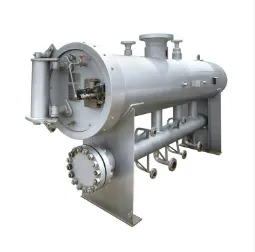
Nov . 25, 2024 09:11
Back to list
Gas Pressure Regulating Valves and Skids Explained
In the gas industry, gas pressure regulating valves and pressure regulating skids are essential for controlling gas flow and ensuring the safe distribution of natural gas. They play a vital role in maintaining the right pressure within pipelines and other gas systems. Understanding how these components work, their types, and their significance can help operators and engineers manage gas distribution effectively.

What are Gas Pressure Regulating Valves?
A gas pressure regulating valve is used to control the pressure of gas as it moves through a pipeline. These valves automatically adjust to ensure that the gas pressure remains within a safe and optimal range, regardless of external conditions. They are critical for preventing over-pressurization, which could lead to damage or safety hazards.
Some common types of gas pressure regulating valves include:
Direct-Acting Valves: These simple valves react directly to changes in pressure. They are suitable for low-flow and low-pressure applications, making them a cost-effective choice for small-scale systems.
Pilot-Operated Valves: These offer more precise control over gas pressure and are ideal for larger systems where more accuracy is required.
Spring-Loaded Valves: These valves use a spring to control gas pressure, providing stability in various industrial and residential gas distribution systems.
Dome-Loaded Valves: Highly accurate and capable of maintaining precise pressure, dome-loaded valves are often used in complex gas systems.
Each type of valve is designed for different pressures and flow rates, so selecting the right one is crucial for optimal performance.
What is a Pressure Regulating Skid?
A pressure regulating skid is a pre-assembled unit that contains everything needed to regulate gas pressure in one package. It typically includes pressure regulating valves, filters, meters, and safety features. Skids are widely used in gas distribution systems to ensure that gas is delivered at the right pressure to consumers.
Pressure regulating skids offer many advantages, including:
Efficiency: As a single unit, a skid simplifies installation and maintenance, making it easier for operators to manage.
Safety: The components in a pressure regulating skid work together to automatically adjust gas pressure and respond to system changes, enhancing overall safety.
Customization: Skids can be tailored to meet the specific needs of different gas systems, including different pressures, flow rates, and gas types.
The Importance of Gas Filtration
A gas filter is a crucial component in pressure regulation systems, removing contaminants from the gas to protect the equipment and ensure a clean gas flow. Gas filtration is particularly important in systems where impurities such as dust, water vapor, and oil can cause problems. Installing gas filters improves the performance and longevity of gas valves, skids, and other critical components.
By keeping the gas clean, filtration systems prevent blockages, reduce maintenance needs, and extend the life of the gas equipment.
Choosing the Right Supplier
When purchasing gas pressure regulating valves, skids, or filtration systems, it’s important to choose a reliable supplier. High-quality components are essential for ensuring the safety and efficiency of a gas distribution system. Look for suppliers with a proven track record of delivering durable and compliant products.
Both gas pressure regulating valves and pressure regulating skids are key elements in managing gas distribution. These components ensure that gas flows at the right pressure and maintains safety standards. Paired with effective gas filtration, these systems protect infrastructure and promote efficient operation. Working with reputable suppliers guarantees that you get the best performance and safety for your gas system.
Latest news
-
Safety Valve Spring-Loaded Design Overpressure ProtectionNewsJul.25,2025
-
Precision Voltage Regulator AC5 Accuracy Grade PerformanceNewsJul.25,2025
-
Natural Gas Pressure Regulating Skid Industrial Pipeline ApplicationsNewsJul.25,2025
-
Natural Gas Filter Stainless Steel Mesh Element DesignNewsJul.25,2025
-
Gas Pressure Regulator Valve Direct-Acting Spring-Loaded DesignNewsJul.25,2025
-
Decompression Equipment Multi-Stage Heat Exchange System DesignNewsJul.25,2025

